Japanese-inspired rock gardens are a time-honored tradition. The basic idea is to take a rectangular plot of sand, scatter in some rocks and add minimal, but stylized, greenery. How the concept of the rock garden actually plays out in real life ranges widely from the faithful to the fanciful. Here are some of our favorite riffs on this ancient Zen tradition.
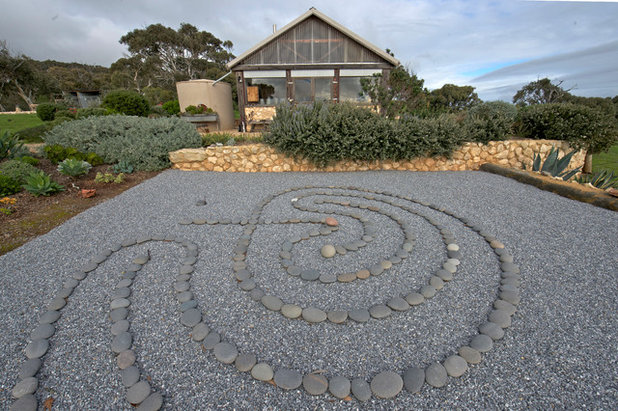
Jeni Lee
The fundamental purpose of a Zen garden is to offer a tranquil space for meditation. A well-designed garden should invite feelings of centeredness and mental clarity, and a flexible labyrinth composed of smooth river rocks is one tried and true path.
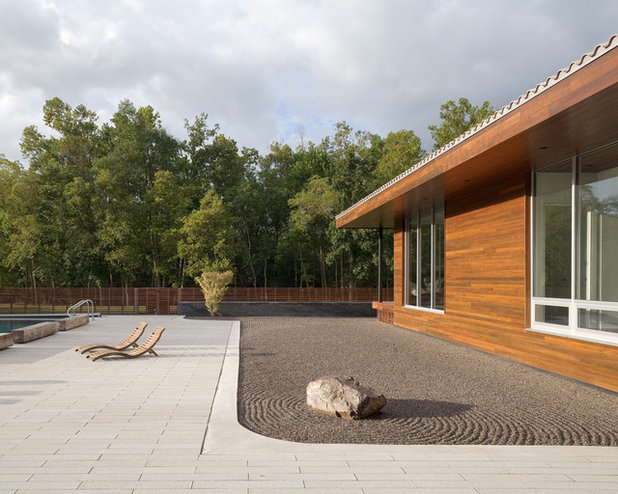
A single rock and some sand are all you need to get set up. If you want to get more serious, use a rake to mimic the effect of rippling water in the sand.
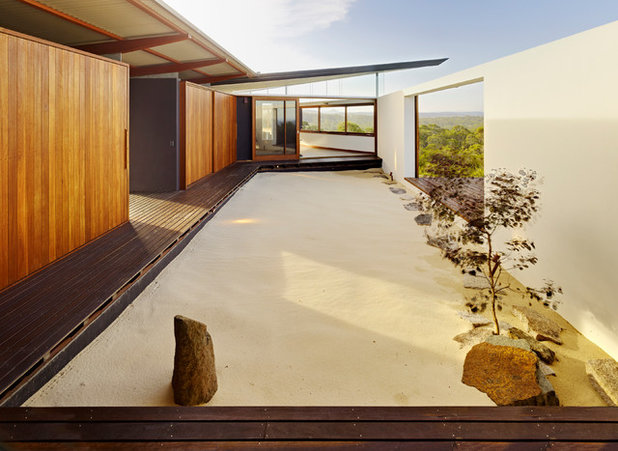
Acacia Joinery Pty Ltd
Here in its most faithful incarnation is a Zen garden whose simple, rectangular design follows tradition. It even includes a water feature that drains out through an external wall. True to form, there’s also a smattering of large rocks and a single tree. Everything is deliberate; nothing is superfluous. There are no distractions, in accordance with Zen practice.
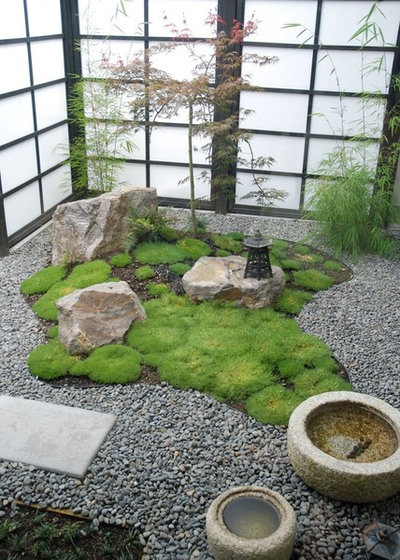
Garden Mentors
In this design, the sand has been replaced by river rocks, and the mossy ground cover and native Japanese plant species are emphasized as much as the rocks themselves. The Japanese maple and bamboo are thoughtful details, and the translucent acrylic screen recall Japanese shoji screens. This garden is stylized, but it feels completely natural, as if every element is exactly where it must be.
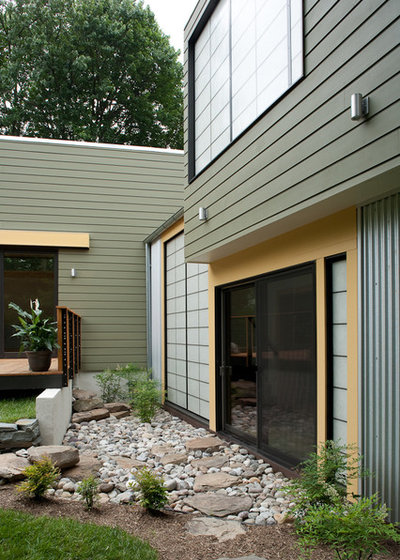
Jim Tetro
Rock gardens tend to be xeriscape designs by their very nature, and so are a natural fit for homes seeking LEED accreditation. They consume virtually no water and can be designed using materials found onsite. These sustainable gardens don’t need to take up much space, either. They’re a stroke of genius in shady or forgotten corners where grass goes to die.
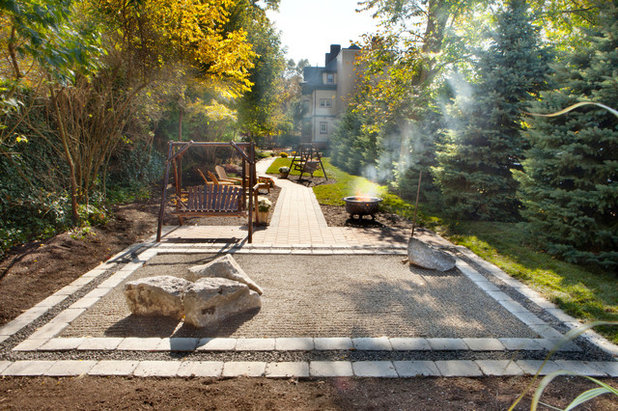
The Cousins
It doesn’t take much to create your very own monastic-style sanctuary, but with the money you’ll save on plants and your water bill, consider investing in a special border. It will define the space and delineate your contemplative zone within the yard. Treat it like something sacred, and it will become something sacred.
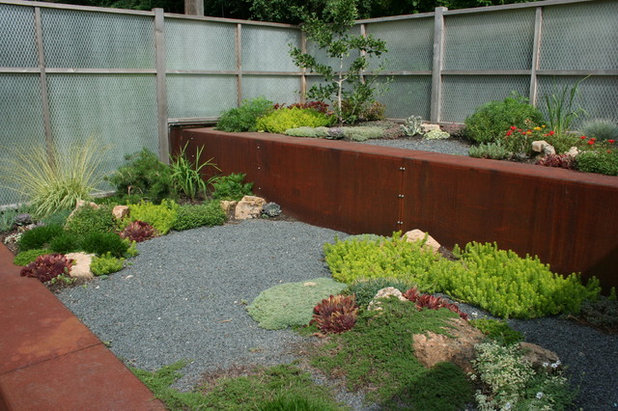
Phillips Garden
As meditative Zen practices can connect us with both the natural and spiritual worlds, it may seem counterintuitive to use industrial elements like steel in a Zen garden design. But there’s no rule book for translating an Eastern idea into a Western landscape. Personally, I love this double-decker garden for its two different vantage points and potentially two different moods.
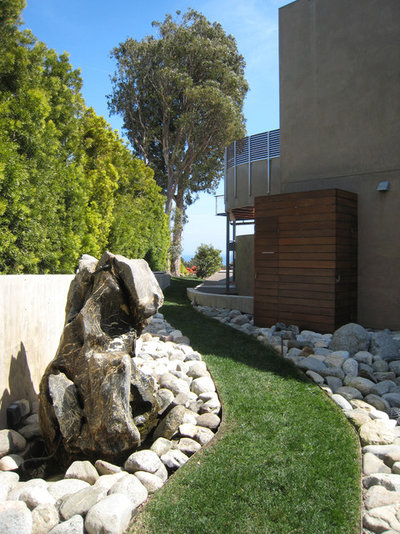
GEL: Griffin Enright Landscape
Even if a side yard is all you have to work with, and even if you can’t bear to part with a swath of lush green grass, you can still sneak in a tidy border of big rocks and a water feature.
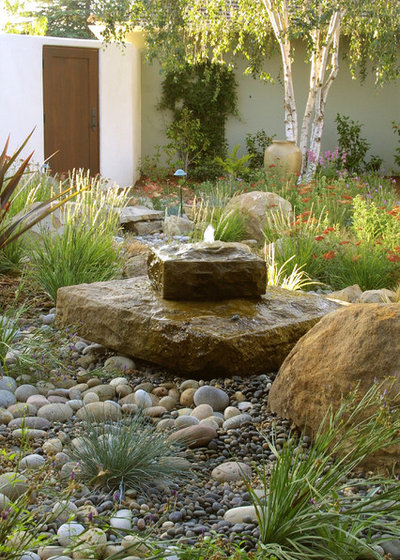
Margie Grace - Grace Design Associates
The placement of this meditative water feature at the center of the garden suggests that it is meant to be admired from afar. It might prompt contemplation of the need to touch and possess objects of beauty.
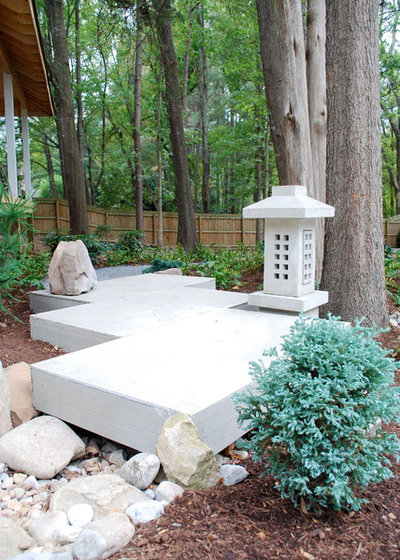
Jay Sifford Garden Design
You’ll often find small bridges featured in Japanese gardens. This garden showcases a version of a Japanese
yatsuhashi, which landscape designer Jay Sifford explains is a zigzag-shaped bridge. He designed this one “to simulate a granite mountain plateau with a boulder peak,” he says.
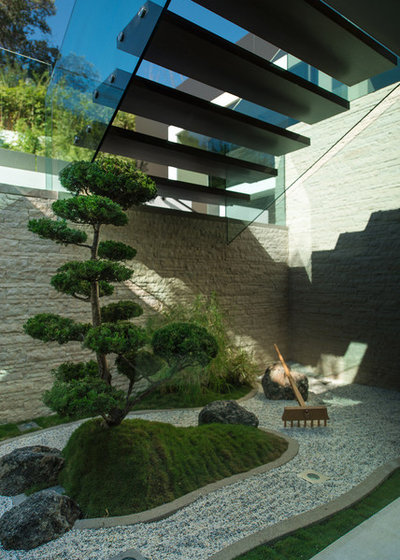
Whipple Russell Architects
Simplicity rules in this merger of slick modern stairwell and naturalistic retreat. The overscale rake refuses to be ignored as it rests on a boulder, waiting to be guided by human hands, and the tall bonsai tree blurs the line between inside and out.
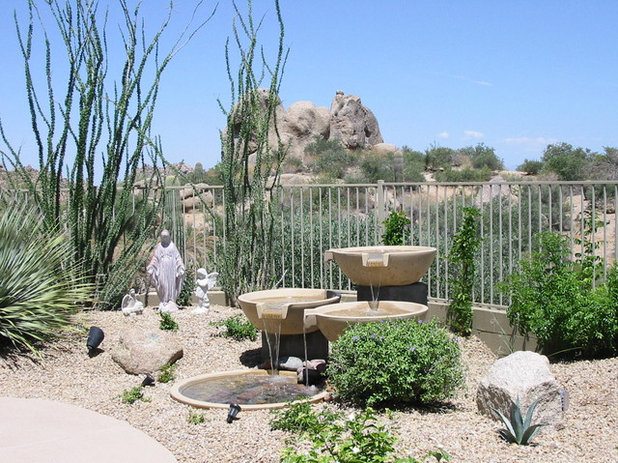
JSL Exteriors Landscape Design/Build
Some rock gardens aren’t Japanese at all, but purely Southwestern, born out of the region’s hot and dry climate. A water feature visually cools the garden, and planting rocks instead of thirsty grass feels appropriate in areas with low rainfall. A recirculating fountain provides a soothing and guilt-free experience.
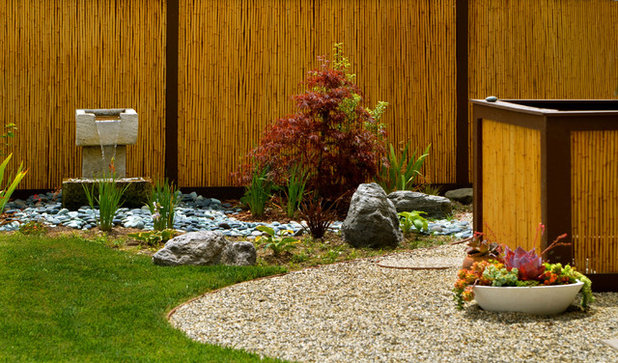
Jesse Im/bugonmyleaf
A bamboo screen is another great backdrop for a Zen garden, and with standard fence-height rolls available at major home improvement chains, it’s a more affordable alternative to shoji screens.
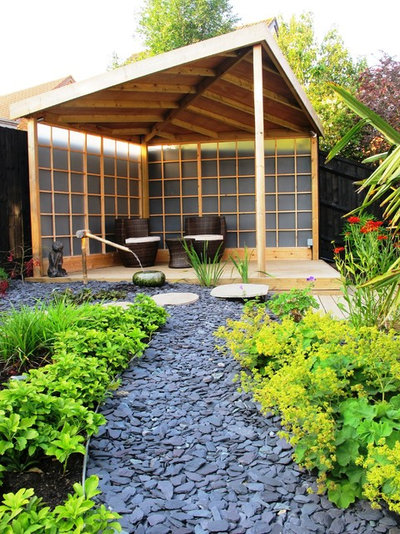
Katherine Roper Landscape & Garden Design
One doesn’t need to actually stand or sit in the garden to enjoy it. The Zen garden is a work of art, and the pleasure is in the viewing. Despite all the shrubbery, there’s no mistaking the Asian influence here — the materials were kept simple, and a shoji screen was chosen for the backdrop. How lovely to start the day with a cup of tea and a dose of mindfulness.
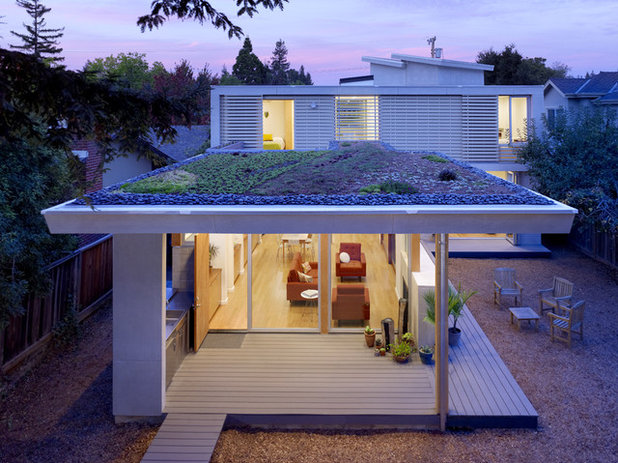
Feldman Architecture, Inc.
If you have a window from which to enjoy it, a Zen garden makes for an unusual green roof. This would serve a more decorative and less functional purpose than a more densely planted green roof would.
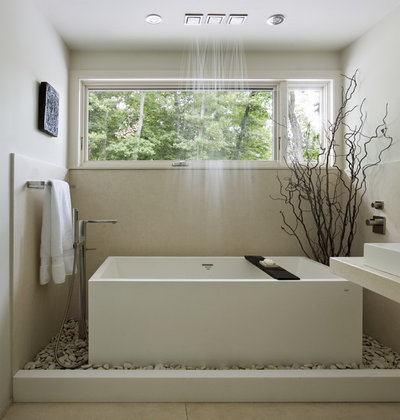
Denali Construction
The Zen garden is easy to replicate indoors. You just need river rocks, a plant — or at least branches, as pictured here — and an open mind.





